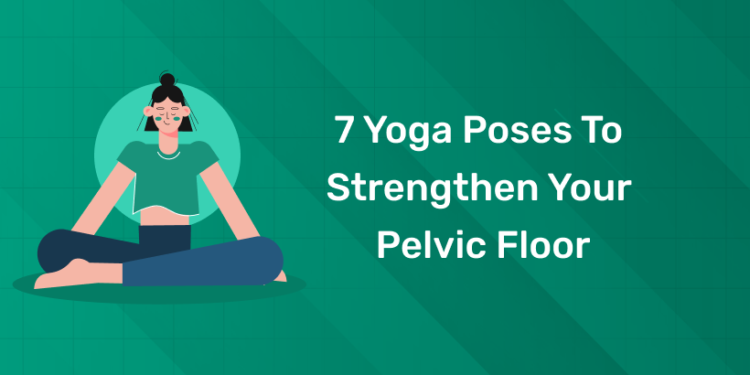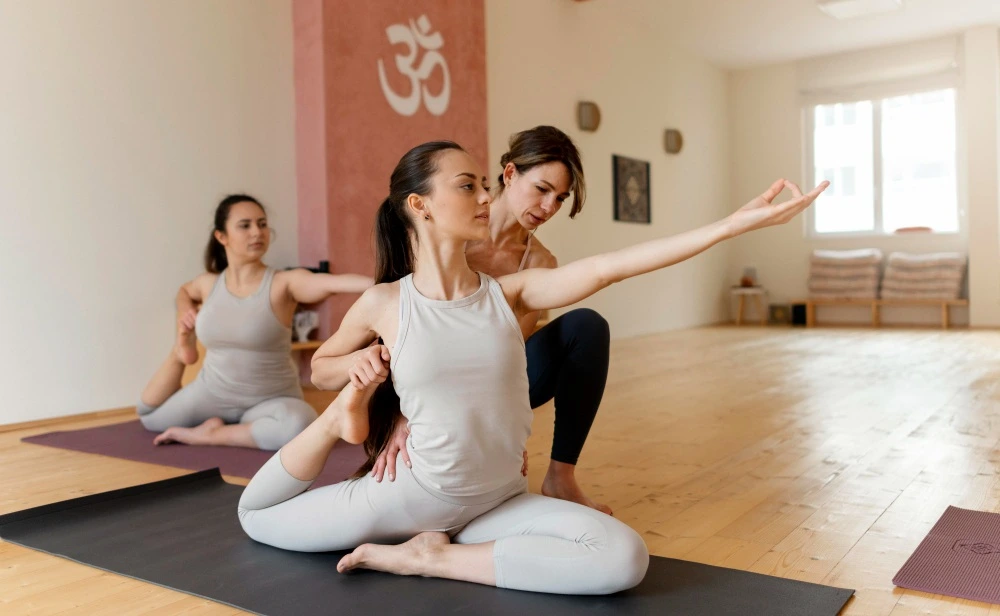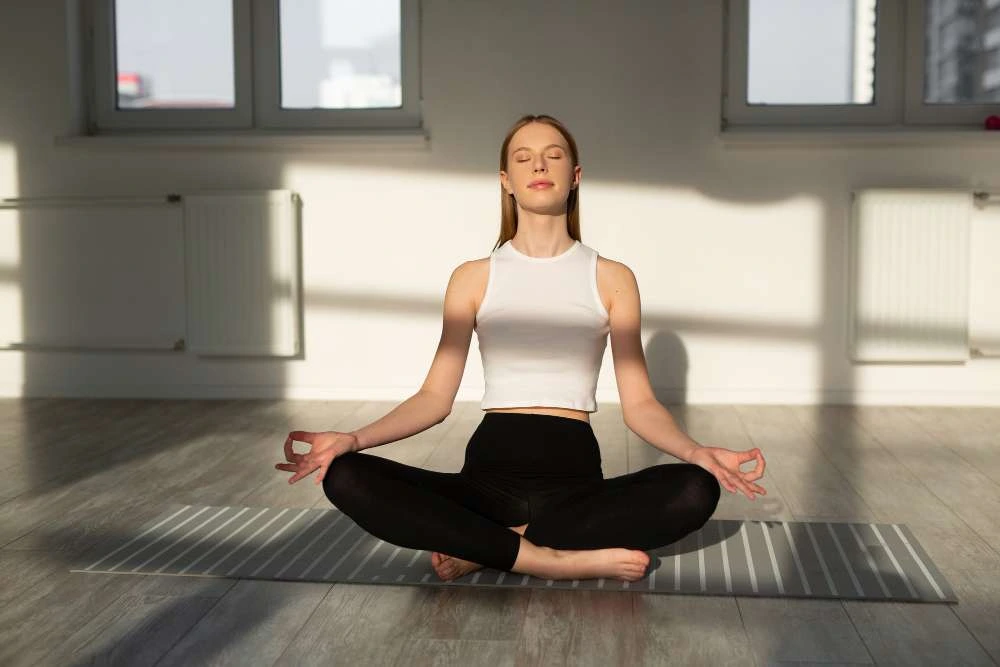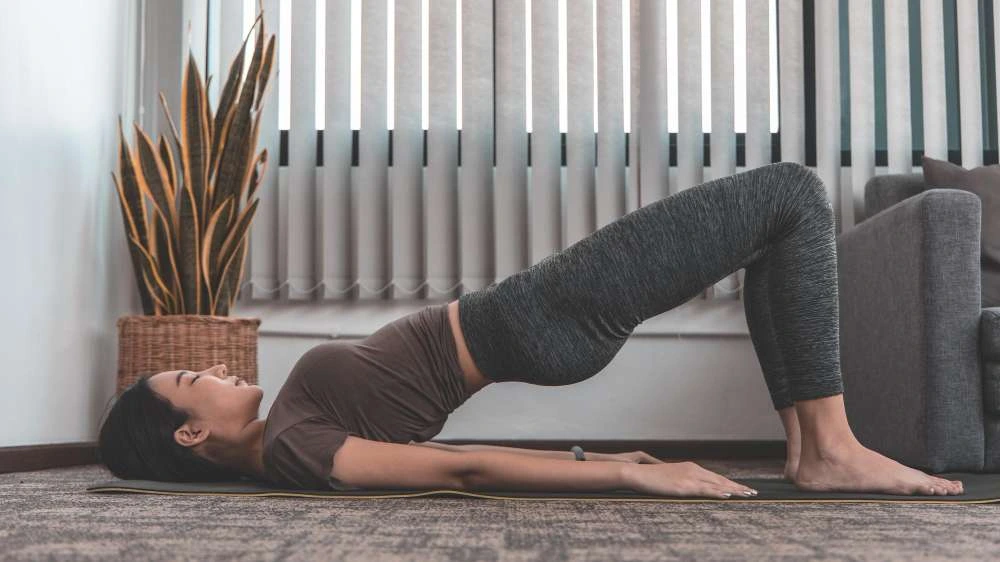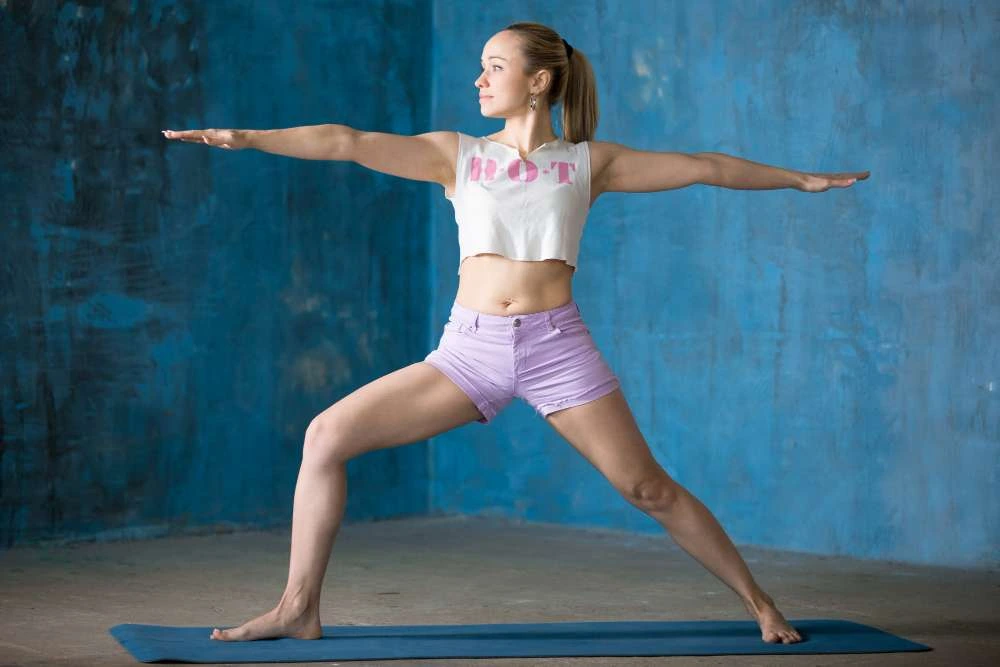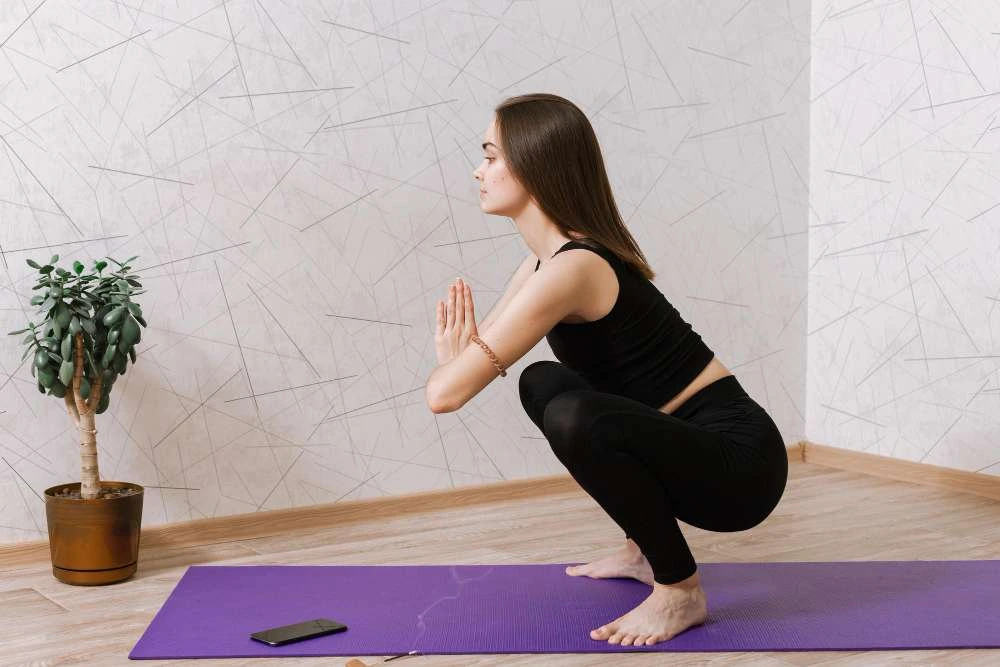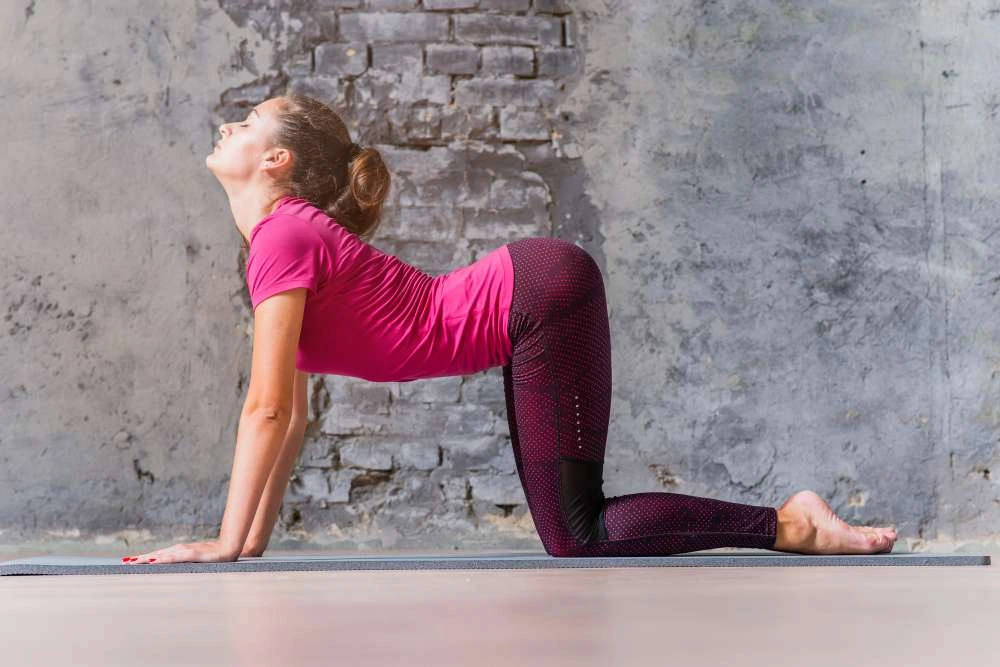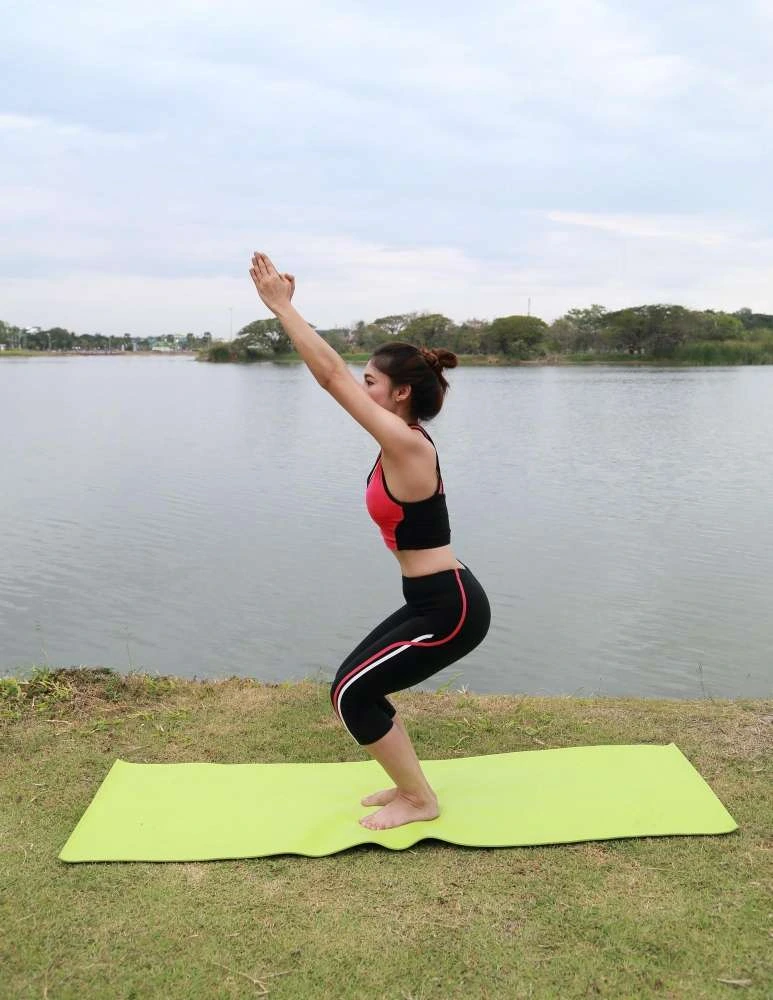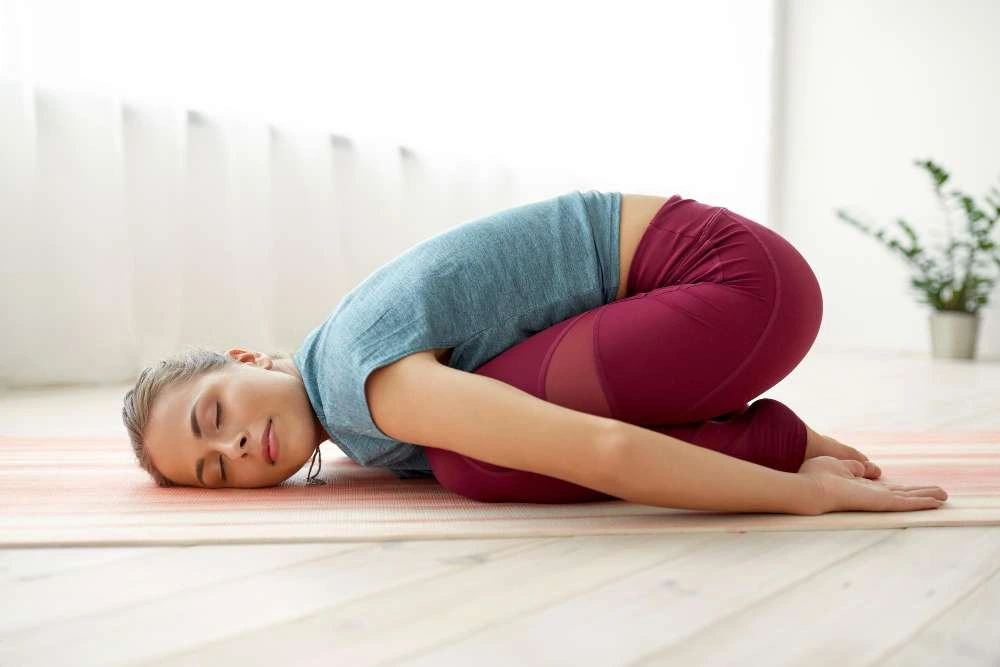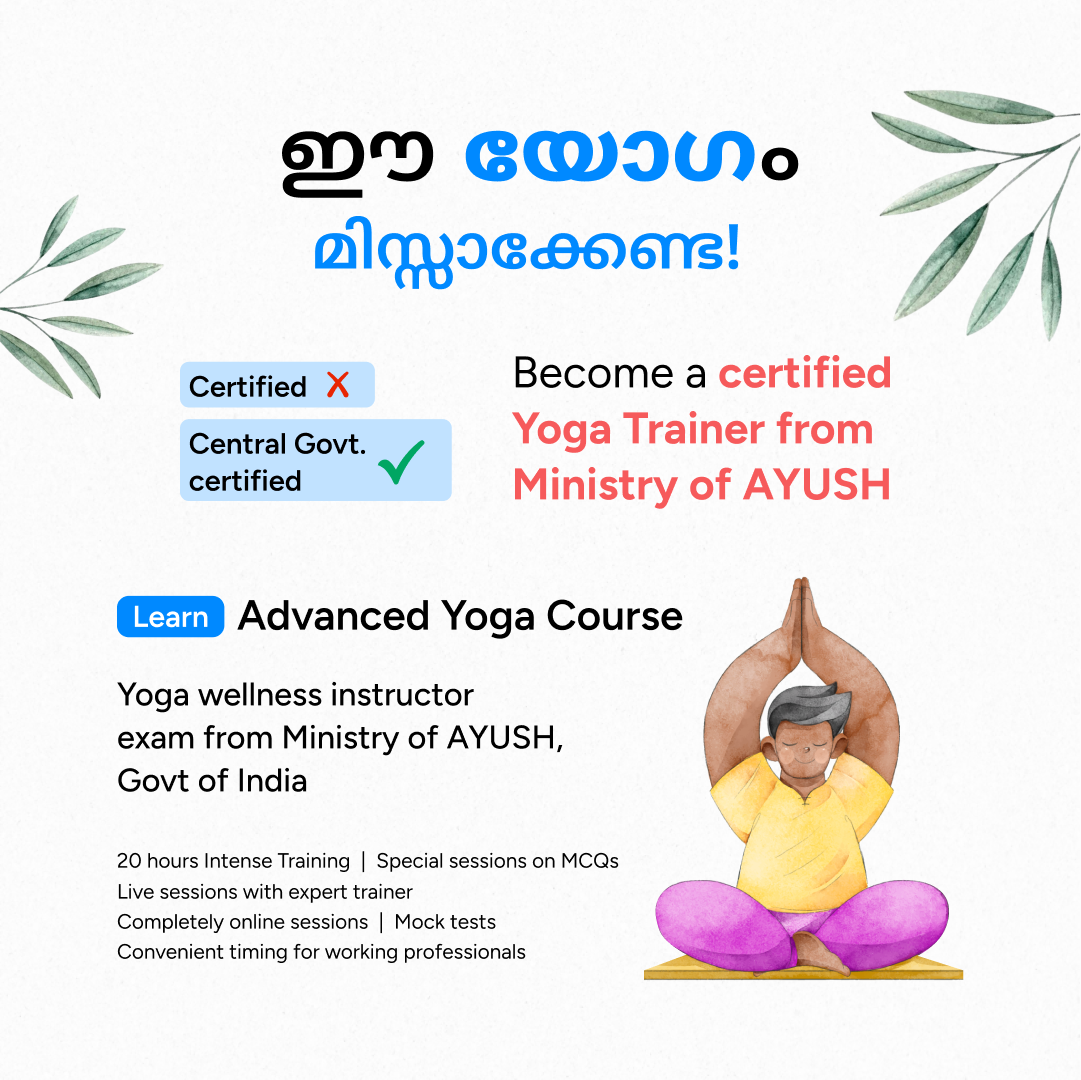Table of Contents
The pelvic floor is a quietly heroic part of your body–small, hidden, and hugely important. When it’s strong and well-orchestrated, your life just flows better, from improved bladder control to a steadier posture, less lower-back strain, and a more invigorating sex life. When it’s ignored, you may experience leaks, persistent back pain or pelvic pressure. The good news is that easy, mindful yoga can make all the difference.
This post guides you through seven yoga poses (and practices) that strengthen your pelvic floor, step-by-step instructions of how to do them correctly, what common mistakes to avoid, and how to fold them into a weekly practice that gels with real life. Whether you’re a yoga newbie or honing your skills as a teacher-in-training, you’ll discover hands-on, practical advice.
Key Takeaways:
- The pelvic floor isn’t just about “holding on”; it’s a dynamic structure that needs strength, timing, and relaxation.
- Yoga supports the pelvic floor by combining breath, mindful activation, and functional movement.
- Start with subtle engagement (Mula Bandha) and build into functional poses like Bridge, Chair, and Malasana.
- Avoid breath-holding and over-tension; coordinate lifts with slow exhales and soft inhales.
- Consistency matters more than intensity: short daily practices are highly effective.
- Seek professional advice for severe symptoms, pregnancy-related questions, or postpartum recovery.
Get Certified, Get Confident! Join Our Yoga Teacher Training Course!
Why the pelvic floor matters
Imagine the pelvic floor as a hammock of support at the base of the pelvis. It’s comprised of muscles, connective tissue, and nerves that all work together
- support the bladder, bowel, and reproductive organs;
- assist with continence (holding on/letting go when appropriate);
- play a role in sexual arousal and performance;
- work with the diaphragm and abdominal muscles to generate core stability and hold posture.
Since they’re internal, these muscles are out of sight and out of mind, so people often don’t build accurate awareness of them. That’s where mindful yoga steps in: it unites breath, attention, and movement so you can start to discover, access, and relax the pelvic floor effectively.
Signs your pelvic floor could use some care.
1: Which of these is the primary goal of yoga practice?
You don’t have to be diagnosed to do some pelvic-floor work. Watch for:
- peeing your pants when you cough, sneeze, laugh, jump or run;
- a dragging sensation in the pelvis;
- trouble urinating or defecating;
- recurrent lower-back pain that won’t respond to typical back stretches;
- painful sex or loss of sensation.
If any of these are a factor, a soft careful approach is optimal, and if symptoms are serious, consult a pelvic-health physiotherapist or your GP prior to pumping up practice.
Become a Certified Yoga Instructor
Yoga Teacher Training Course by Entri App: Master authentic yoga techniques, earn certification, and build a successful career as a professional yoga instructor.
Join Now!How yoga benefits the pelvic floor
Strength isn’t the whole story. The pelvic floor needs:
- Strength: to hold up the pelvic organs and manage continence;
- Timing: to contract and relax at the right time (say, contracting reflexively during a cough);
- Flexibility and mobility: to prevent tightness that can radiate pain into the low back, hips, or groin.
Yoga trains all three. This slow movement, mindful breath, and conscious contraction (and release) help you integrate the pelvic floor with the diaphragm and deep abdominal muscles, the trio that creates steady intra-abdominal pressure and protects the spine.
Guidelines & safety before you start
- Breathe first: Always coordinate pelvic-floor actions with breath: typically a gentle contraction on the exhale and a deliberate release on the inhale.
- Start small: Brief contractions and good form beat long, tense holds that push other muscles to compensate.
- Avoid breath-holding: Valsalva (holding your breath and straining) increases pressure on the pelvic organs and can worsen symptoms.
- If pregnant or postpartum: consult your midwife, doctor, or pelvic-health physiotherapist before starting new exercises. Some poses and intensity should be adapted, especially in the first 12 weeks postpartum.
- Pain is a red flag: If a pose causes sharp pain in the pelvis, groin, or lower back, stop and get professional advice.
- Practice consistency over intensity: Fifteen minutes of mindful work most days beats one hour of rushed, unfocused practice once a week.
How to cue the pelvic floor (simple practical cues)
- Imagine gently stopping the flow of urine: that inward-upward lift is the basic activation. (Do not practise stopping urine as an exercise regularly, only use this mental image to locate the muscles.)
- Think of lifting the pelvic floor like drawing a small diamond-shaped muscle upward. It’s not about squeezing the buttocks or jamming the lower belly in.
- Pair with soft exhales: lift on a slow exhale, soften on the inhale.
- Readjust if you feel the belly bulging out, the breath stopping, or the face and neck straining, these indicate overworking.
Become a Certified Yoga Instructor
Yoga Teacher Training Course by Entri App: Master authentic yoga techniques, earn certification, and build a successful career as a professional yoga instructor.
Join Now!The 7 yoga poses (with cues, variations and common mistakes)
1. Mula Bandha: The Root Lock (foundational practice)
Why it’s important: Mula Bandha is the classical yoga technique for pelvic-floor engagement. It builds awareness, improves tone, and helps coordinate breath with the internal muscles.
How to practise:
- Start seated (cross-legged) or lie on your back with knees bent.
- Breathe naturally for a few breaths.
- On a gentle exhale, imagine drawing the pelvic floor up toward the spine, a subtle lift rather than a forceful squeeze. Hold 2–5 seconds, then release on the inhale.
- Repeat 6–12 times. Keep the face and jaw relaxed.
Variations & progressions: Practice seated during a meditation, incorporate into Bridge Pose (lift during the ascent), or practise while standing to make it functional.
Common mistakes: squeezing the glutes, breath-holding, or over-lifting so the breath becomes shallow. Keep it gentle and integrated with natural breathing.
2. Bridge Pose (Setu Bandhasana), lift & stabilise
Why it helps: The lift engages the glutes and pelvic floor together, reinforcing posterior chain support and supporting the lower back.
How to practise:
- Lie on your back, knees bent, feet hip-width apart and close to your sitting bones. Arms by your sides.
- Inhale; as you exhale softly, engage the pelvic floor and press through your feet to lift the hips. Keep the lift steady, avoid over-arching the lower back.
- Hold 5–8 breaths, keeping a gentle pelvic-floor engagement. Lower slowly with control.
Modifications: Place a block under your sacrum for a supported Bridge. That allows you to feel the lift without muscular fatigue and practise pelvic-floor engagement while supported.
Common mistakes: over-arching the ribs, clenching the buttocks, or holding the breath. Keep the engagement subtle and the neck long.
3. Warrior II (Virabhadrasana II) functional standing strength
Why it helps: Standing poses train the pelvic floor in natural, load-bearing contexts and improve hip stability and balance.
How to practise:
- From a wide stance, turn your front foot out and bend the front knee to 90° (or as close as comfortable).
- Root deeply through both feet. Soften the pelvic floor slightly on the inhale; on the exhale, draw it gently in and up as you settle into the stance.
- Keep a tall spine, open chest and breathe for 5–10 breaths. Switch sides.
Variations: Shorten the stance or support the front knee with a small block if you have knee issues.
Common mistakes: letting the front knee collapse inwards, clutching the shoulders, or gripping the pelvis. Root through the legs and allow a balanced lift.
4. Malasana – Squat Pose (deep hip opener)
Why it helps: Deep squats naturally lengthen and strengthen the pelvic floor and open the hips, making Malasana an effective functional exercise.
How to practise:
- Stand with feet slightly wider than hip distance. Squat down keeping heels on the floor (or use a block under heels).
- Bring palms in prayer at the chest and press elbows into inner thighs to widen the hips.
- Maintain a gentle pelvic-floor lift during exhales and soften on inhales. Hold for 5–8 breaths.
Modifications: Use a rolled blanket under the heels or sit on a block if you cannot keep heels down. Keep the spine neutral and chest lifted.
Common mistakes: rounding the lower back, gripping through the shoulders, or forcing the heels down. Move with curiosity and ease.
5. Cat–Cow (Marjaryasana–Bitilasana)- mobilise & coordinate
Why it helps: This flowing pair links breath, pelvic-floor cues and spinal mobility; it’s excellent for coordination and gentle activation.
How to practise:
- Start on all fours with hands under shoulders and knees under hips.
- Inhale into Cow: lift the tailbone and chest, soften the belly and let the pelvic floor release slightly.
- Exhale into Cat: round the spine and draw the pelvic floor up in a gentle lift.
- Repeat 10–15 rounds, moving with the breath.
Modifications: Move more slowly if you have wrist or knee discomfort; use fists under hands to reduce wrist strain.
Common mistakes: forcing range, holding breath, or overly tensing the neck. Keep the breath smooth and the flow comfortable.
6. Chair Pose (Utkatasana) – build endurance
Why it helps: Chair pose strengthens thighs and the pelvic floor under load, useful for real-life actions like lifting and climbing stairs.
How to practise:
- Stand with feet hip-distance. On an inhale, raise arms; exhale and bend knees as if sitting back into a chair.
- On the exhale, draw the pelvic floor up modestly and keep the breath steady. Hold 5–8 breaths. Stand up with control.
- Repeat 2–4 times.
Modifications: Feet can be hip-width apart for balance; practice near a wall to use it for support if needed.
Common mistakes: allowing knees to push past toes, gripping the jaw, or breath-holding. Keep the weight in the heels and maintain neutral spine.
7. Child’s Pose (Balasana) – restorative release with pelvic awareness
Why it helps: Balasana is restorative and provides gentle pelvic-floor engagement while offering a chance to connect breath and relaxation – crucial for balanced pelvic health.
How to practise:
- From all fours, sit back onto your heels with knees wide and toes touching (or knees together if more comfortable).
- Extend your arms forward or rest them by your sides. On the exhale, feel a gentle engagement of the pelvic floor if that feels supportive; on the inhale, allow a soft release.
- Rest here for 5–10 breaths or longer.
Variations: Support the torso with a bolster or blanket for comfort; keep the knees wider to reduce pressure on the belly if pregnant.
Common mistakes: tensing the shoulders or straining the neck. Use Child’s Pose as a moment to tune into breath and pelvic-floor coordination.
Putting the poses together: two practice plans
Short daily practice – 20 minutes (quick and effective)
- Settle & breathe (2 minutes): seated; check natural breath.
- Mula Bandha practice (5 minutes): 8–12 gentle lifts paired with breath.
- Cat–Cow (3 minutes): 10 rounds, focus on timing of lift & release.
- Bridge Pose (5 minutes): 3 slow lifts, 5 breaths each with gentle pelvic-floor engagement; supported Bridge for 2–3 minutes.
- Child’s Pose (3 minutes): rest, observe sensations.
- Close with breath (2 minutes): seated, mindful breath and gentle pelvic release.
Build-and-flow: 45 minutes (strength + mobility)
- Warm-up & breath (5 mins): seated breathwork, pelvic awareness.
- Mobilise (10 mins): Cat–Cow variations, hip circles in tabletop, gentle lunges.
- Standing (10 mins): Warrior II sequences both sides, short holds in Chair pose. Focus on standing pelvic-floor engagement.
- Strength (10 mins): Bridge variations (single-leg bridge if appropriate), Malasana holds, and micro-lifts.
- Cool-down (8 mins): Supine twists, gentle hip openers. Finish in Child’s Pose and a short Savasana with breath-led pelvic relaxation.
Practising across life: functional cues off the mat
The real benefit is the transfer to daily life. Use these simple cues:
- Before lifting an object: inhale to prepare; exhale and gently engage the pelvic floor as you lift.
- When you cough or sneeze: practise a quick, automatic pelvic-floor lift on the exhale to protect against leaks.
- When sitting for long periods: practise micro Mula Bandha lifts to keep awareness, and take breaks to stand and mobilise every 30–45 minutes.
Pregnancy and postpartum notes:
- Pregnancy: many poses need adaptation; avoid deep belly compression and supine holds after the first trimester unless cleared by your care provider. Focus on gentle mobilisation, pelvic tilts, and breath-led pelvic awareness.
- Postpartum: healing varies widely. Begin with gentle breath and soft pelvic-floor coaching, and consult a pelvic-health physiotherapist if you notice persistent leaking, heaviness, or pain. Entri’s Yoga TTC content covers pregnancy-safe adaptations and safe postpartum progressions for teachers who want to guide students wisely.
Common pitfalls and how to fix them
- Overworking: If you feel tightness in the belly, face or neck when you try to engage the pelvic floor, you’re overdoing it. Back off and practise with softer cues
- Ignoring relaxation: Being able to switch off the pelvic floor is as important as being able to lift it. Add dedicated releases to sessions
- Chasing strength only: Combine strength with mobility and breath. Overemphasis on one aspect reduces coordination
- Thinking it’s only for women: Pelvic-floor training benefits everyone, men and non-binary people, too, for continence, sexual health, and core stability.
Watch the full video here:
How Entri’s Yoga TTC Course aligns with pelvic-floor practice
If you’re a yoga student who wants to go deeper beyond the mat, Entri’s Yoga Teacher Training Course can help. The course includes:
- Anatomy modules that go beyond names to show function, how the pelvic floor, diaphragm and deep abdominals work as a unit.
- Practical teaching strategies for adapting poses for pregnancy, postpartum and pelvic-health concerns.
- Breath and pranayama modules that teach how to integrate pelvic-floor cues into breathing patterns.
- Personalised learning pathways (AI-assisted guidance) so you can focus on areas that matter most to your students or to your own practice.
If you’re training to teach, understanding pelvic-floor mechanics transforms your cueing, sequencing and safety awareness. Entri’s curriculum is designed for learners who want evidence-informed, practice-ready skills, from the basics of Mula Bandha to designing classes for students with pelvic-health issues.
Practice with curiosity, not pressure
The pelvic floor is an intimate, sensitive set of muscles; approach it with gentle curiosity rather than brute force, and you’ll always be better off. Yoga trains breath, awareness, and movement together. Start with short, regular practices, learn to feel the subtle lift and release, and let function guide the work more than aesthetic or ego.
Over weeks and months, the simple habits you build will become the invisible scaffolding that supports your everyday life, from carrying groceries to laughing without worry. If you want to go deeper, whether to teach or to practice, look for a structured teacher-training course with anatomy and pelvic-health modules. Entri’s Yoga TTC connects sequencing with anatomy and breath.
Become a Certified Yoga Instructor
Yoga Teacher Training Course by Entri App: Master authentic yoga techniques, earn certification, and build a successful career as a professional yoga instructor.
Join Now!Frequently Asked Questions
Can pelvic-floor exercises make things worse?
If practised incorrectly, by breath-holding or over-clenching, they can increase tension. Always prioritise gentle, breath-coordinated practice and consult a professional if unsure.
How often should I practise pelvic-floor work?
Short daily sessions (10–20 minutes) are very effective. Aim for at least 3–4 focused practices per week.
Will these poses help postpartum?
Many of them help, but postpartum recovery varies. Start gently, prioritise pelvic-floor releases and follow advice from your midwife or physiotherapist.
Should men practise these poses too?
Yes, pelvic-floor training benefits people of all genders for continence, support and sexual health.
When should I see a specialist?
If you have persistent leaking, pain, significant changes in bowel or bladder habits, or pelvic organ prolapse symptoms, consult a pelvic-health physiotherapist or GP.


